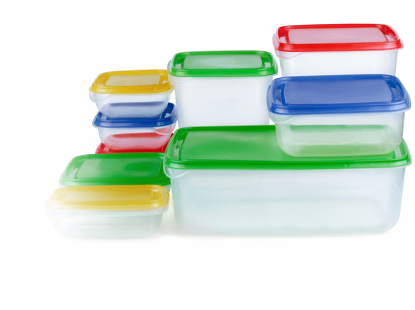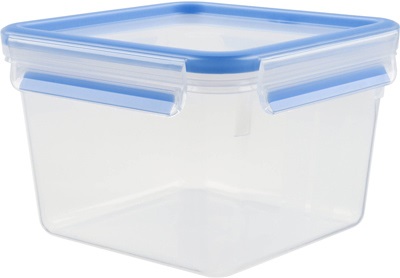How to Choose Food Containters
Food containers and boxes are the basic equipment of every kitchen. They prolong the shelf life and freshness of food, make transporting food easier, and make storing food in the fridge or freezer simple. You will find a wide selection of materials, sizes, shapes and closure systems for food containers on the market. We will help you navigate the wide range of available food containers and choose the ones best suited for your kitchen.

Several Tips for Selecting Your Food Containers
Think about what you will use the containers for (refrigerating, freezing, baking, carrying ...) and choose a suitable material accordingly.
The better the containers are sealed, the longer the food will last.
Modern materials have a longer service life, so it is worth it to invest in newer containers.
Some containers are equipped with internal compartments or a valve for heating in a microwave.
Basic parameters for choosing of food containers
Container closure system
A very important aspect to consider when selecting a food container is the container closure system. How well the lid seals the container affects the freshness and shelf life of food. If the container does not seal properly and the air can get in, the food inside will go bad much more quickly than in a container with a good seal.
What kinds of container closure systems are there?
Classic "snap-on" plastic lid
Food containers with this closure system belong among the cheaper ones. The lid of the container is not sealed 100%, so air can get into the container; food then loses its freshness faster and does not last as long. It is also not good to tilt this kind of a container. Liquid foods like soups or sauces can leak out through the space between the lid and the container.
Clip system with a silicone seal
The clip system is much more reliable than the classic snap-on lid and is 100% impermeable. It guarantees a much longer shelf life and safe transportation of the food. The lid is firmly attached to the container, so you do not have to worry that your soup will pour into your backpack or that the smell from the fridge will get into the container (and vice versa).
Pay attention to the sealing of the lid of food containers with a clip system. It can be:
Vacuum containers
They preserve food by taking out the air from the container, which prolongs the freshness and flavour of the food. Vacuum containers are perfect for coffee, tea, biscuits, as well as for leftovers, salami and cheeses, etc.
Intended use
In every household, food containers are used differently. Some use them to pack school snacks for children, some to store food in the fridge or freezer, others to bring their lunch to work. Therefore, there are several types of containers on the market that have specific properties and uses:
Special features
Glass Food Containers
If you like to bake, roast or heat food in an oven, then a glass container will come handy. You can make lasagne, pasta or soufflé in it. Unlike classic baking dishes, you can put a plastic lid on the glass container once the prepared food has cooled and take it to a picnic or cottage with you or put it in the fridge. The dish will stay fresh much longer this way. When selecting a glass container, make sure that the container is made of heat-resistant glass and is therefore suitable for the oven.
Plastic Food Containers
Plastic containers, or food boxes if you will, use the most popular of all the materials. They are most commonly used to store food in a fridge or a freezer, to bring food to school or work, to heat food in a microwave, etc. When combined with a high-quality sealing and closure system, they significantly extend the shelf life of food. You can choose from many shapes and sizes. Some plastic food containers are marked as 100% without BPA, i.e. made without a chemical that negatively affects human health. Such food containers are suitable not just for you but also for children.
Tritan is a relatively new material that is increasingly used to make bottles and food containers. Unlike some plastic containers, it does not contain BPA. It is crystal clear, lightweight and very shock-resistant. Tritan can withstand temperatures up to 90°C without warping. Therefore, you can pour hot sauce or soup into Tritan containers without damaging them. Containers made of Tritan do not affect the taste of food and do not affect the smell of food. At the same time, the container itself does not absorb smells. You can therefore store garlic spread in a Tritan container without worrying that you will never get rid of the garlic smell.


